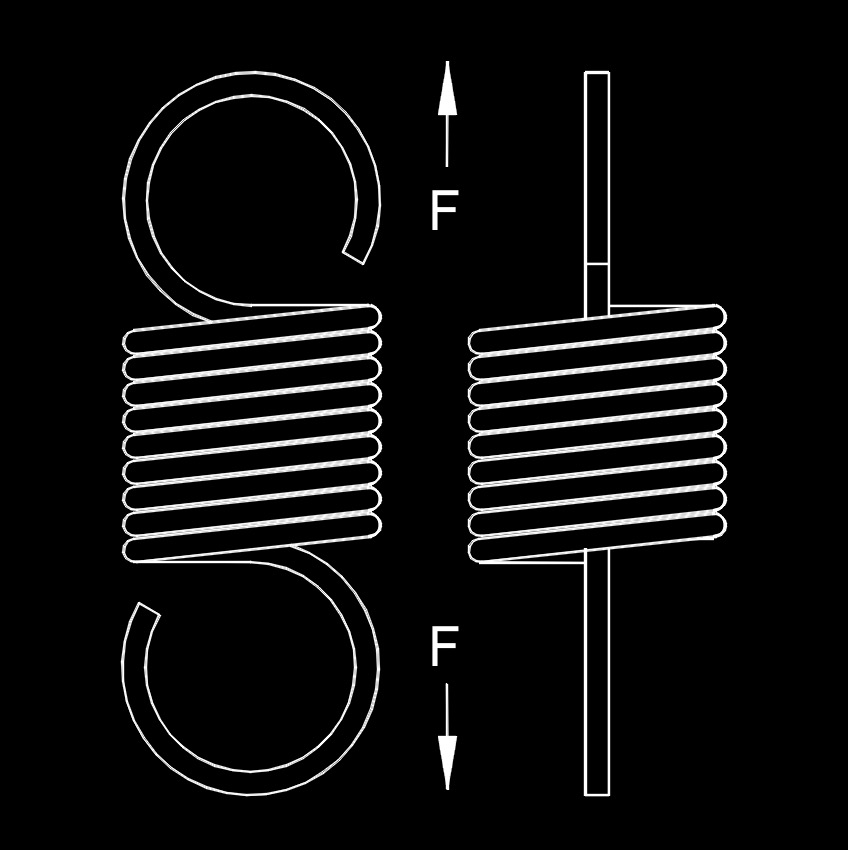Spring Tension
Spring Tension Formula |
||
|
\( T_i \;=\; P - n_s \cdot l_f \) (Spring Tension) \( P \;=\; T_i + n_s \cdot l_f \) \( n_s \;=\; \dfrac{ P - T_i }{ l_f }\) \( l_f \;=\; \dfrac{ P - T_i }{ n_s }\) |
||
| Symbol | English | Metric |
| \( T_i \) = Initial Tension | \( lbf \) | \( N \) |
| \( P \) = Load | \( lbf \) | \( kg \) |
| \( n_s \) = Spring Rate | \(lbf\;/\;in\) | \(kg\;/\;mm\) |
| \( l_f \) = Final Length | \( in \) | \( mm \) |
 Spring tension is the force or pressure exerted by a spring when it is stretched or compressed from its natural or equilibrium position. Springs are mechanical components that store potential energy when they are deformed from their rest position and release this energy when they return to their original state. The amount of spring tension required for a particular application depends on the desired function and the materials and design of the spring. Springs can be designed to provide very light tension for delicate applications or heavy tension for tasks that require more force. They come in various shapes and sizes, including coil springs, leaf springs, and torsion springs, each with its own characteristics and uses.
Spring tension is the force or pressure exerted by a spring when it is stretched or compressed from its natural or equilibrium position. Springs are mechanical components that store potential energy when they are deformed from their rest position and release this energy when they return to their original state. The amount of spring tension required for a particular application depends on the desired function and the materials and design of the spring. Springs can be designed to provide very light tension for delicate applications or heavy tension for tasks that require more force. They come in various shapes and sizes, including coil springs, leaf springs, and torsion springs, each with its own characteristics and uses.

